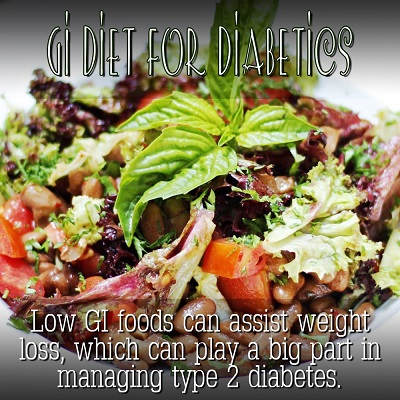 The glycemic index, or GI for short, is implemented by people with diabetes to rate how carbohydrates in certain foods will impact their blood sugar levels.
The glycemic index, or GI for short, is implemented by people with diabetes to rate how carbohydrates in certain foods will impact their blood sugar levels.
Foods and beverages provide your body with the carbohydrates that fuel your body. The glycemic index is used to measure whether these foods will cause your blood glucose levels to raise slowly or rapidly over a time frame of usually 2 hours.
Low GI foods gradually release glucose into the blood stream, as they break down slowly. As these foods are digested more slowly, they keep you feeling full for longer.
A dietician should be consulted if you are diagnosed as diabetic. He/she will provide you with the right instruction to follow the diet.
Low GI Foods to Include
Some foods that are on the low GI part of the scale include:
- Most fresh fruits -peaches (canned in natural juice as well), apples, pears, citrus fruits, mangoes, apricots.
- Most vegetables – carrots, onions, capsicum/peppers/chilies, mushrooms, cabbage, broccoli, eggplant, orange sweet potatoes.
- Dairy – Milk, Greek yogurt, soy milk.
- Legumes – soy beans, chick peas, lentils, canned kidney beans.
- Grains – couscous, pasta, noodles, barley, basmati rice.
- Breads – choose breads with dense grains or seeded i.e. soy & linseed, wholegrain or mixed grain, sourdough.
- Cereals & snacks – Traditional rolled oats, All bran, nut & seed muesli bars, hummus, unsalted nuts i.e. peanuts, cashews.
Meal planning is necessary when maintaining this diet, as some high GI foods are also nutritious and needed, so it is recommended to combine them with a low GI food to balance out the blood glucose levels.
When consumed alone, high GI foods are absorbed into the blood stream very fast, causing a significantly large spike in your blood sugar levels.
High GI foods can sometimes be of value to diabetics. If a person with diabetes experiences a hypoglycemic event, hypo for short, the blood sugars will fall below the standard range. Consuming a high GI food (generally something sugary i.e. candies, sodas) will quickly restore their blood sugars back to normal fixing the issue for the time being.
However, in most cases, diabetics should avoid high GI foods or at least pair them with a low GI option on occasion.
High GI Foods to Avoid
A small list of certain high GI foods that should be avoided includes:
- Breads – white bread, French baguette, bagels, white wraps.
- Vegetables -white potatoes, corn, parsnips, pumpkin, frozen chips or french fries.
- Fruits – watermelon, rock melon, pineapple, honeydew melon, dates.
- Dairy – ice-cream, sweetened yogurts, coconut yogurt.
- Cereals & snacks – pretzels, cornflakes, coco pops, sultana bran, buttered/sugared popcorn, donuts, candy, rice cakes, maple flavored syrup, sugary baked goods.
- Grains & staples– white and short grain rice including instant rice, taco shells, muesli, granola, instant mash potato.
Consuming too many high GI foods can be detrimental to your health. High GI diets have been linked to several diseases and conditions including heart disease and breast cancer.
The benefits of consuming a low GI diet are significantly the opposite. A low GI diet may reduce your risks of both cancer and heart disease although further research is being done to scientifically prove this.
Low GI foods can assist weight loss, which can help in managing type 2 diabetes, as well as reducing your levels of cholesterol by up to 9.6%.
The GI of a food can sometimes be difficult to calculate, although speaking with a registered dietician should supply you with the knowledge to make the best choices of the foods you eat.






